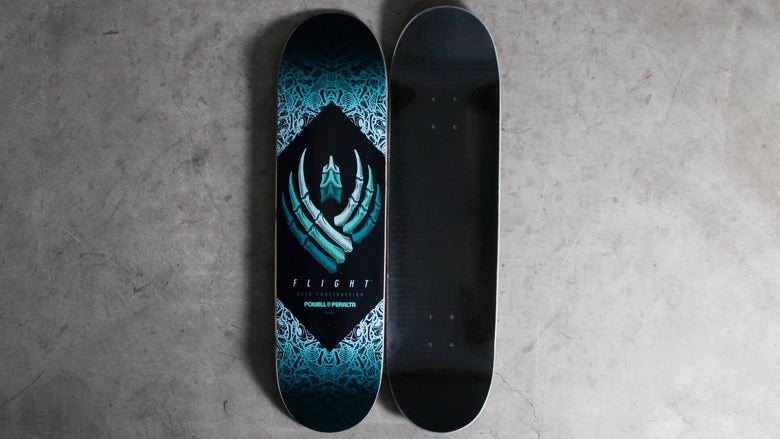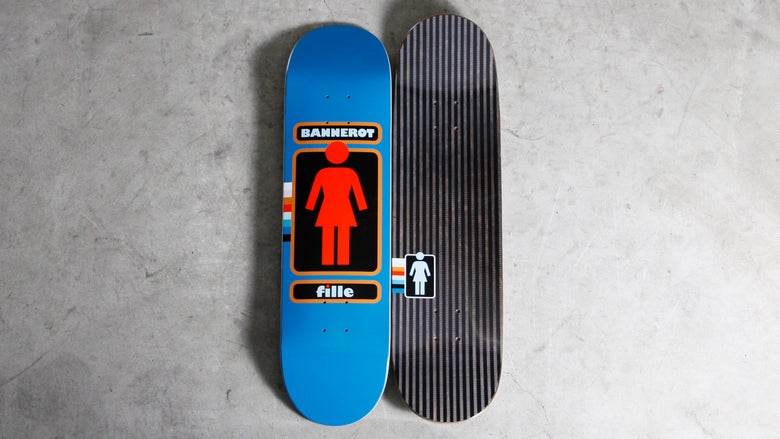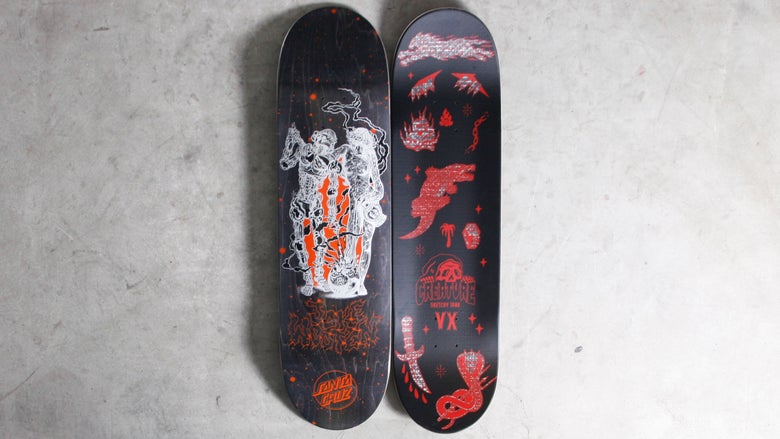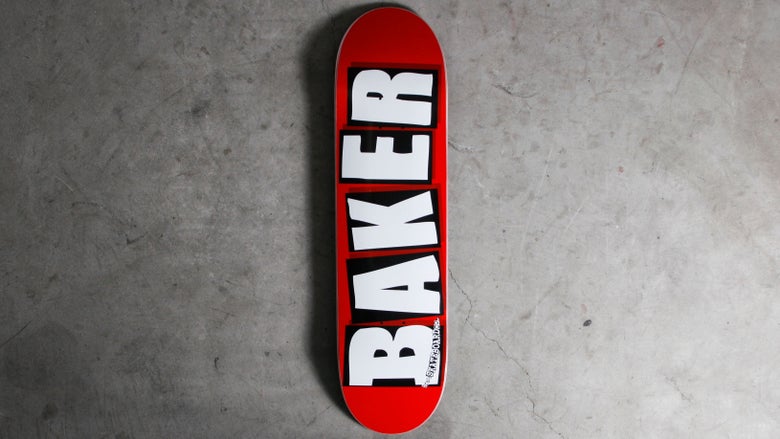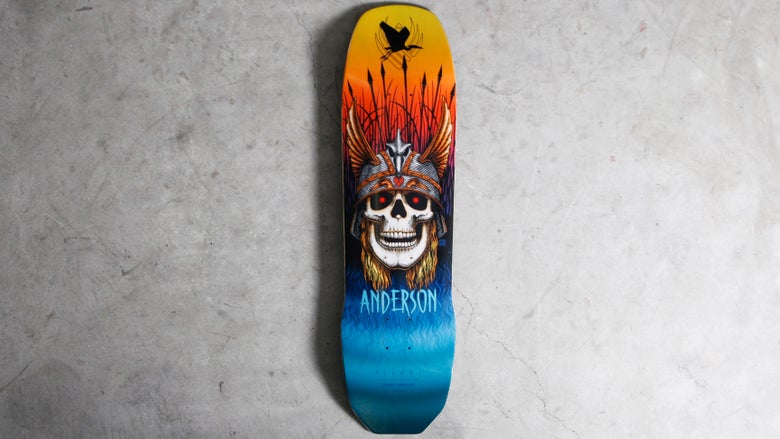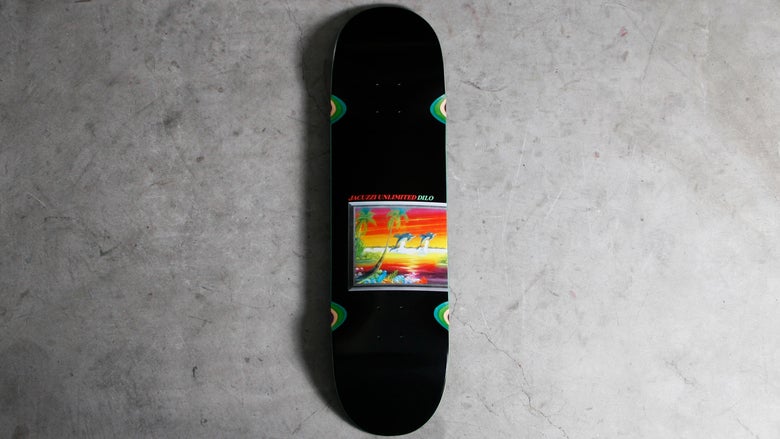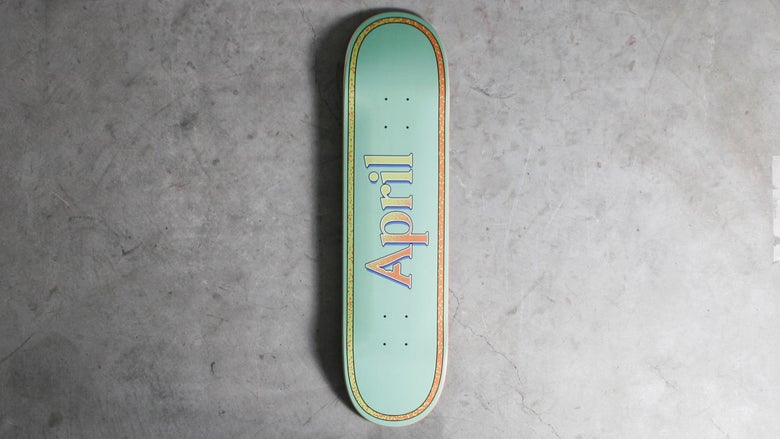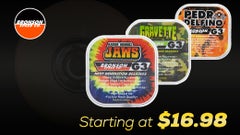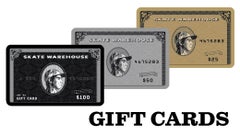Skateboard Deck Buying Guide
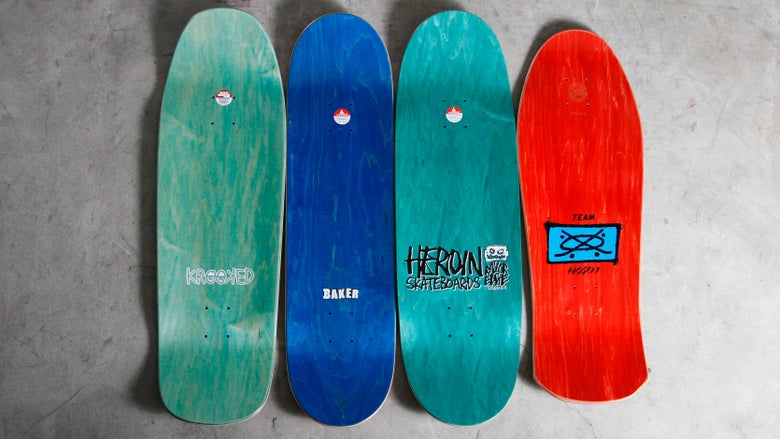
Choosing the right skateboard deck is crucial for every skater, as it directly impacts your riding experience. You want to make sure to consider which skateboard deck size, shape, features, and materials will match your skating style and personal preferences. From deck technologies to different brands and unique features, this comprehensive guide will help you find the right skateboard deck for you.
To fully understand how skateboard decks differ, it is important to know about skateboard deck sizing and all of the different features or parts of a skateboard deck. With different sizes and deck features in mind, it is also important to understand the difference between popsicle shapes, old-school shapes, fun shapes, and egg shape skateboard decks. At the end of this guide, we'll provide a list of five recommended decks available at Skate Warehouse, explaining why each one is a solid choice!
What Is Neccessary When Picking Out A Skateboard Deck:
- Understanding the Parts of the Deck - A general understanding of width, length, nose, tail, wheelbase, concave, and kick will help find the right skateboard deck for you.
- Shoe Size – Knowing your shoe size will help you choose what size skateboard deck will work best.
- Terrain/Type of Skating – Looking to skate street? Transition? Cruise around? All of the above? Knowing what type of skating you would like to do will help you choose the correct width and type of skateboard.
- Type of Skateboard – Know what type of skateboard best suits you. Popsicle decks, Old School decks, and Fun Shapes are just a few popular options.
Skateboard Deck Anatomy and Sizing
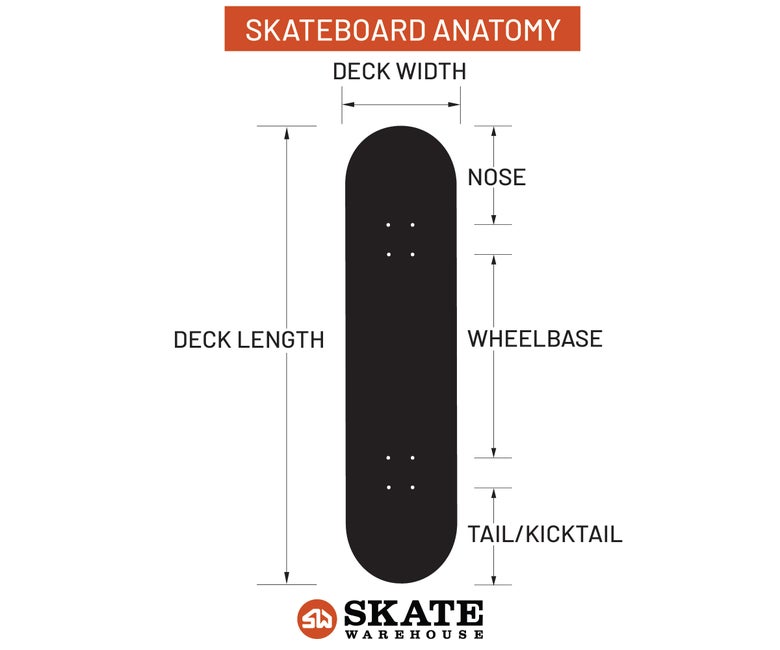
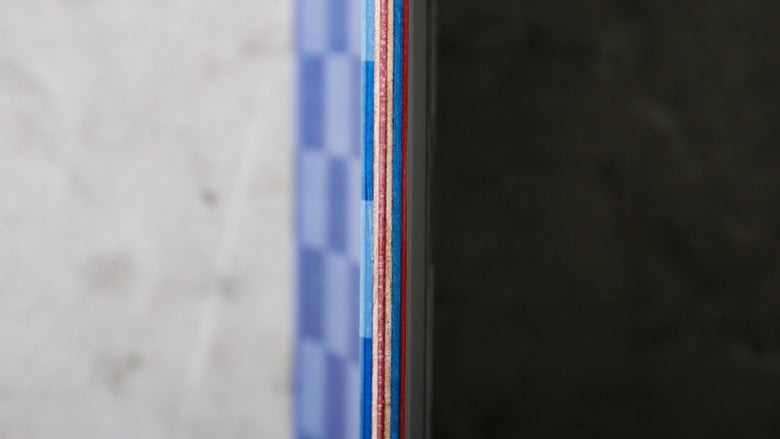
Materials:
A skateboard deck is typically made of seven layers of wood veneer (also reffered to as plies) glued together. The construction and materials used in skateboard decks play a crucial role in their durability, flexibility, and overall performance. In some cases, skateboard decks may incorporate carbon fiber or fiberglass layers to enhance strength and reduce weight. These materials can add specific characteristics to the deck's performance.
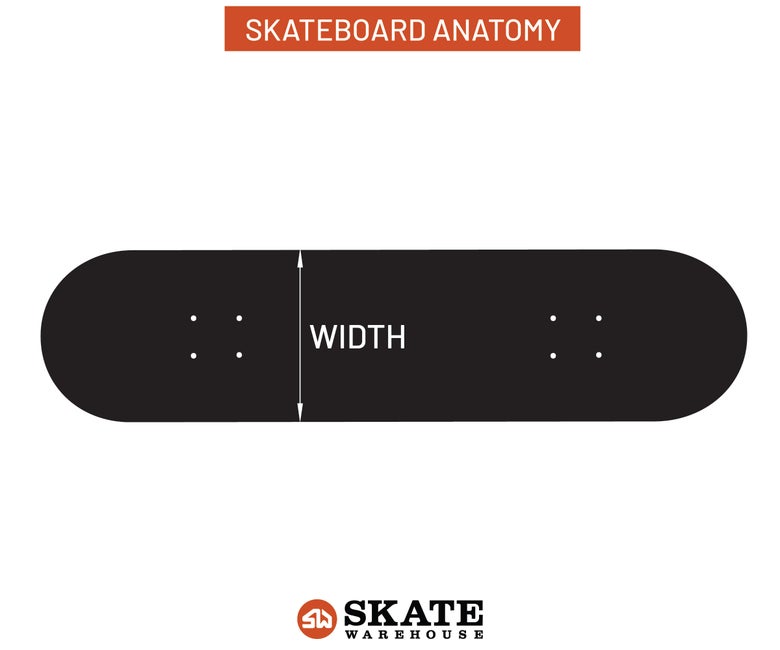
When choosing a new skateboard deck, one of the most important factors to consider is the deck size. The width and length of your deck impacts everything from comfort and stability, to what kinds of tricks you can perform. Taking the time to evaluate your needs and finding the right deck dimensions for your height, skating style, and experience level is essential for maximizing your performance.
Skateboard Deck Width:
The width of a skateboard refers to the measurement across the deck, from one side to the other. It is typically expressed in inches. It is recommended to choose a deck size that complements your style and body size. Skateboard decks typically range from 7 to 10 inches in width, but some decks are made outside this range. Decks that are narrower in width are typically lighter in weight, lift easier, and offer more control for technical tricks. Wider decks make it easier to keep your feet on the board, provide more stability when cruising at high speeds, and in general work well for larger skaters or skaters with larger feet.
Deck Width & User Height-Based Recommendations:
Height |
5'3 and under |
5'3" to 5'8 |
5'8" to 6'0 |
Over 6'0
|
Deck Width |
7.75" or smaller |
7.75" to 8.0" |
8.0" to 8.25" |
8.25" and above |
Deck Width & User Shoe-Size-Based Recommendations:
Shoe Size |
7 or Smaller |
7 to 8.5 |
8.5 to 9 |
9 and Larger |
Deck Width |
7.0" to 7.75" |
7.75" to 8.0" |
8.0" to 8.25" |
8.25" and above |
Skateboard Width For Transition vs. Street Skating:
Transition skating typically involves riding on ramps, bowls, and quarterpipes. Transition skateboard decks are often wider, with a longer wheelbase to provide more stability when riding on ramps. A skateboard deck width of 8.5 inches to 10 inches or more are common for transition skating. Decks with a wide shape and mellow to medium concave offer a more comfortable surface area for stability during high-speed transitions.
Street skateboarding involves performing tricks on ledges, stairs, rails, and other street features. The focus is on technical maneuvers and control. Street skateboard decks are generally narrower to facilitate flip tricks and precise foot placement. Sizes around 7.5 inches to 8.25 inches are common, with 8.25 inches as the most popular street skateboarding deck size. Street decks often have slightly steeper kicktails to assist with flip tricks and a shorter wheelbase for easier maneuverability. Street decks often have a medium to steep concave, providing a concave shape that assists with flip tricks and responsiveness.
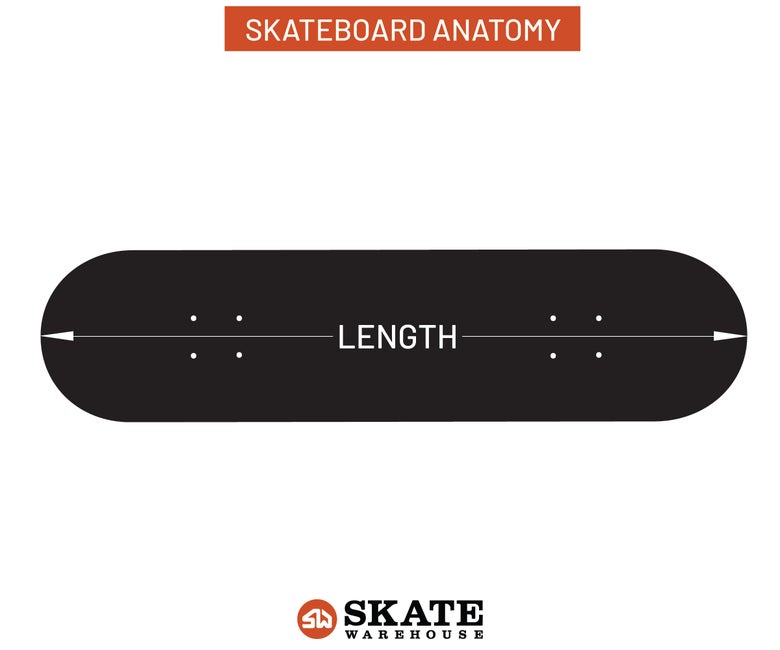
Skateboard Deck Length:
The length of a skateboard is the measurement from the tip of the nose to the tip of the tail. A deck's length impacts balance, maneuverability, and weight distribution. Standard deck lengths range between 28 and 32 inches. The length of the deck usually corresponds with the width. In most cases, the wider the skateboard deck, the longer length it is.
Deck Length & User Height-Based Recommendations:
Height |
5'5" and under |
5'5"-6' |
6' and up |
Deck Length |
28"-30" |
30"-32" |
32" and up |
While these guidelines provide a good starting point, personal preference also matters. Trying different deck dimensions can help determine what feels best for balance, control, and your enjoyment. With the right deck width and length combination to match your size, skill level, and intended riding style, you'll progress faster and have more fun cruising or learning tricks.
Need more assistance on how to measure a skateboard deck? Watch our helpful video below for more information on measuring width, length, and wheelbase.

Understanding the Tail:
Location:
The tail is located at the back of the skateboard, opposite to the nose. It is the end that often trails behind the skater when riding.
Shape:
Tail shapes can vary, but they are generally narrower and less curved than the nose. Some decks may have a more pronounced upturn (also known as the kicktail) at the tail, affecting pop and responsiveness.
Function:
The tail is a crucial element for executing tricks that involve popping the tail off the ground, such as ollies, kickflips, and other maneuvers. Skaters use the tail for leverage and control during slides and grinds.
Understanding the Nose:
Location:
The nose is located at the front end of the skateboard, opposite to the tail. It is the end that leads the way as a skater rides forward.
Shape:
Noses are generally wider and may have a more pronounced curve than the tail. Some decks even have unique designs or concave shapes on the nose to cater to individual preferences.
Function:
The nose is instrumental in tricks that involve lifting the front of the skateboard off the ground, such as nose manuals, nollies, and other maneuvers requiring control over the board's direction.
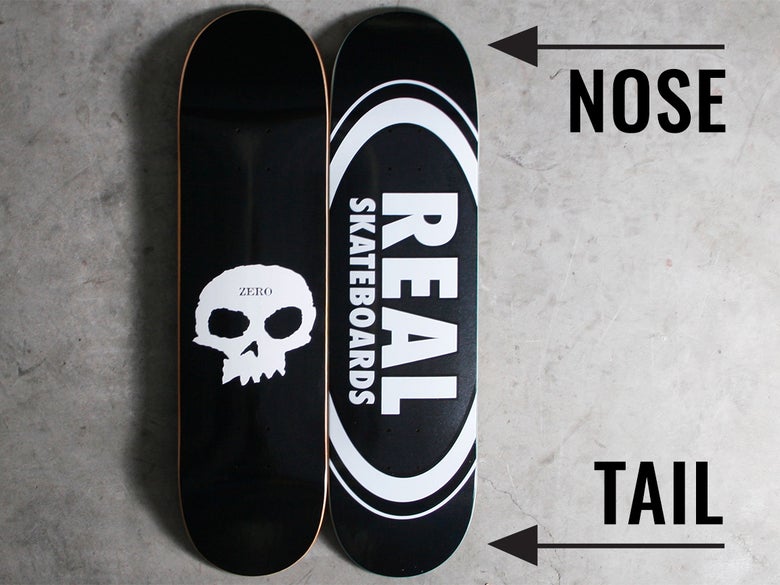
How To Tell The Nose and Tail Apart:
Graphic Design:
Many skateboard decks feature distinct graphics or logos on the tail and nose. The majority of skateboard graphics read left to right (from nose to tail) or top to bottom (nose to tail), but there are some exceptions. Familiarize yourself with these visual cues to quickly identify each end.
Wear and Tear:
Over time, the tail may exhibit more signs of wear and tear than the nose, especially if a rider frequently performs tricks involving the tail. Observing these patterns can help distinguish between the nose and tail.
Shape and Size:
Pay attention to the shape and size of each end. The tail is often smaller and less curved, while the nose is wider and may have a more unique and prominent shape.
Overall Feel:
As you become more accustomed to your skateboard, you'll develop a sense of its overall feel. This intuition will enable you to effortlessly identify the tail and nose without relying solely on visual cues.
Wheelbase:
The wheelbase of a skateboard is the distance between the inner mounting holes of the trucks, measured from the center of the front set to the center of the back. A longer wheelbase generally provides more stability. Skateboards with a longer wheelbase are often preferred for transition skating, where stability is crucial for maintaining control at higher speeds. On the other hand, a shorter wheelbase enhances maneuverability. Shorter wheelbases are common in street skateboards, allowing for quick turns, precise control, and easier navigation through tight spaces.
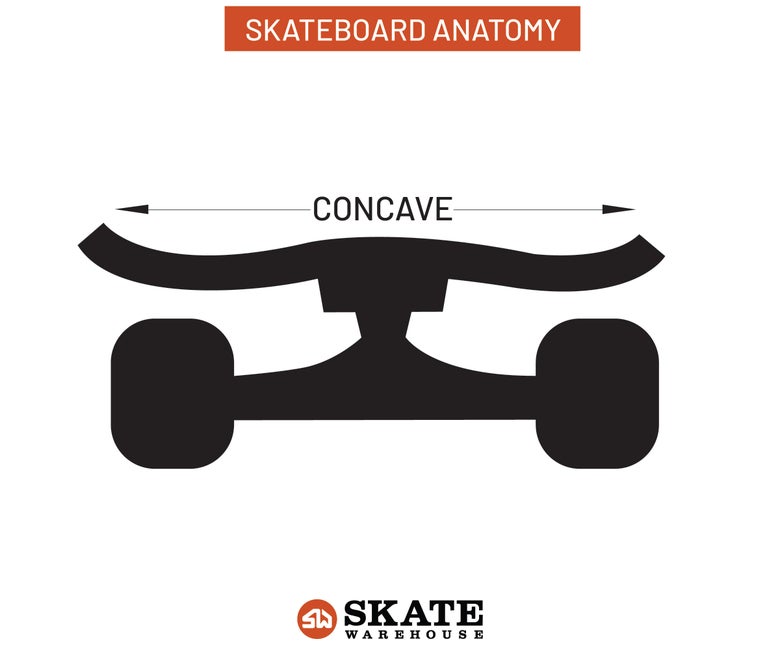
Concave:
Concave is the curvature or inward curve along the width of a skateboard deck. It adds depth to the deck's profile, creating a slight "U" shape. The concave design serves several important functions, influencing a skateboard's responsiveness, control, and the rider's ability to perform tricks. Different skateboard decks feature varying degrees of concave, ranging from mellow to steep.
Mellow Concave:
Mellow concave has a gentler, more gradual curve along the width of the deck. Mellow concave provides a comfortable and relaxed feel, making it suitable for cruising and transition skating. It's often found on cruisers, old school skateboards and some wider popsicle shapes.
Medium Concave:
Medium concave strikes a balance between mellow and steep, providing a versatile option for various styles of skating. Medium concave is suitable for a variety of riding styles, making it a popular choice for street, park, and transition skating. Riders who want a deck that can handle both technical tricks and transitions may opt for medium concave.
Steep Concave:
Steep concave has a more pronounced curvature along the width of the deck. Steep concave offers maximum responsiveness, great for street skateboarding and allowing for precise foot placement during tricks.
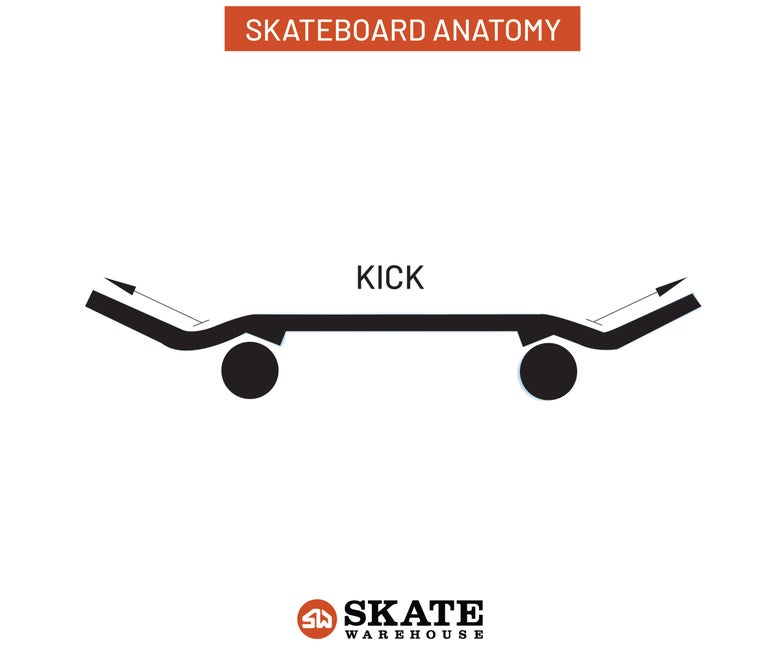
Kick:
The kick is the upturned portion of the nose and tail of a skateboard. It provides stability on a skateboard, aids in navigating direction when riding, and helps with popping tricks. You can find kick on most modern skateboards. Old school shapes or fun shapes may feature less kick than more standard skateboard shapes.
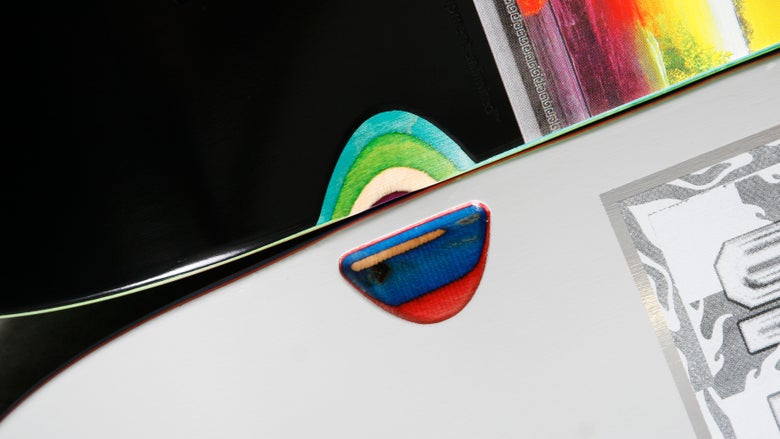
Wheel Wells:
Wheel wells on a skateboard are concave cutouts or indents in the deck, typically located where the wheels are. These cutouts create additional clearance for the skateboard wheels, preventing wheel bite. Wheel wells are an optional feature on a skateboard deck and do not apply to all skateboard decks.
Popular Brands with Wheel Well Decks:
Polar
Opera
It's important to note that the "best" shape or sizing of a skateboard ultimately depends on personal preference. Skateboarders may experiment with different skateboards to find what feels most comfortable and suits their individual riding style.
Skateboard Deck Shapes & How they Differ
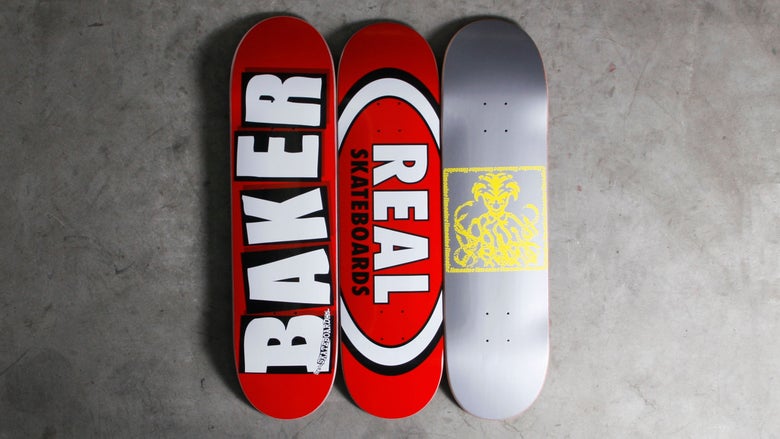
Popsicle/Standard Shapes:
Standard popsicle shapes are almost symmetrical with a rounded nose and tail, ideal for street, park, and transition skating. This is the most common deck shape you will see.
Popular Brands with Popsicle/Standard Shapes:
Real
Baker
Limosine
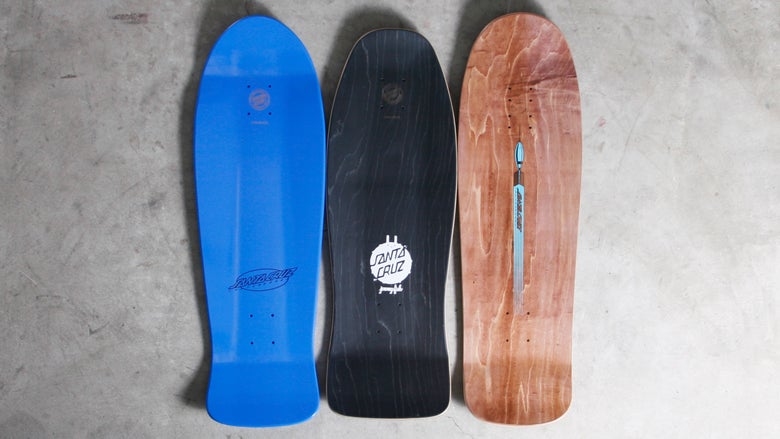
Old School Shapes:
Old school shapes feature more squared tails and a smaller nose, reminiscent of skateboards from the 1980s. The shape of the skateboard is usually more squared, where popsicle shapes are more rounded. They are popular for cruising and transition skating.
Popular Brands with Old School Shapes
Powell (Reissues)
Santa Cruz (Reissues)
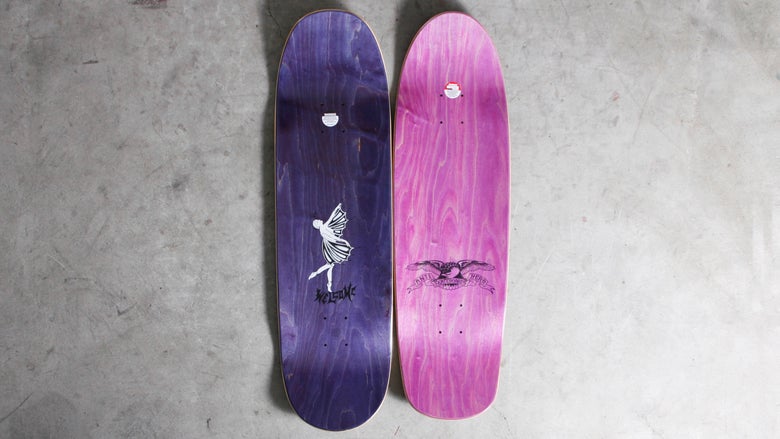
Fun Shapes:
Fun shaped skateboard decks vary widely, often featuring unique designs. These decks cater to skaters looking for a distinct aesthetic and a different experience skating street and transition.
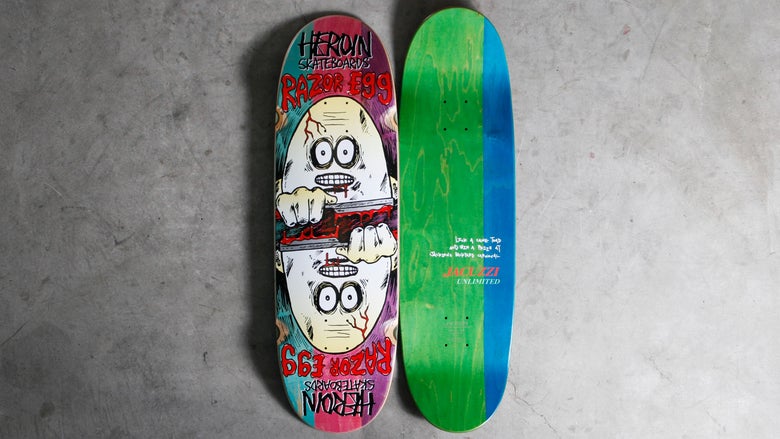
Egg/Football Shapes:
Egg and Football shaped decks combine elements of popsicle and old-school shapes, with a wider middle and more narrower nose and tail.
Specialized Skateboard Deck Technologies
Skateboard deck technologies have evolved over the years, with various brands introducing different materials and constructions to enhance performance, durability, and overall skateboarding experience. Here we go over a few noteworthy deck technologies that may help your skating as you become more advanced.
Powell Flight Decks
Utilizing proprietary construction, Powell Flight decks are thinner, lighter, and stronger than traditional decks. They feature a fiber-reinforced structure, providing pop and longevity.
Girl Pop Secret Decks:
Girl Skateboards incorporates a unique Pop Secret construction featuring carbon-fiber reinforcement, enhancing durability and pop. These decks maintain a lightweight feel without sacrificing strength.
VX Decks:
VX decks utilize a five-ply construction with two layers of Quad X Technology, making them thinner and lighter while maintaining strength. This design enhances performance and responsiveness. VX technology is exclusive to select Santa Cruz and Creature skateboard decks.
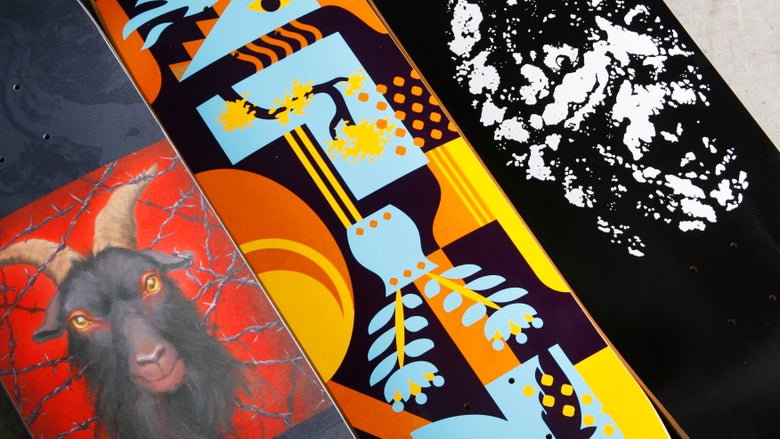
Slick Bottom Decks:
A slick bottom skateboard deck refers to a deck design that incorporates a special bottom layer made from a slick or smooth material, often high-density polyethylene (HDPE) or similar plastic. This slick bottom replaces the traditional wood veneer found on the bottom of standard skateboard decks. The surface of the slick bottom reduces friction when sliding on your board. Many brands utilize slick technology, including Santa Cruz, Krooked, Opera, and Creature.
Five Skateboard Decks we Recommend:
Baker Brand Logo White Deck (8.25 x 31.875)
Brand Reputation: Baker Skateboards is synonymous with raw street skating, and the Brand Logo White Deck is a classic representation of the brand's aesthetic.
Shape: With dimensions of 8.25 x 31.875, this deck strikes a balance between stability and maneuverability, making it suitable for a variety of skate styles.
Technology: Baker decks feature durable 7-ply maple construction, providing a solid pop and reliable performance.
2. Powell Andy Anderson Flight 290 Deck (9.13 x 32.8)
Brand Reputation: Powell Peralta is a legendary name in skateboarding, and the Andy Anderson Flight 290 Deck represents the brand's commitment to innovation.
Shape: With dimensions of 9.13 x 32.8, this deck offers a wide, unique shape designed in collaboration with pro skater Andy Anderson. The versatile size caters to street, park, and transition skating.
Technology: The Flight Deck series by Powell Peralta is known for its cutting-edge construction, incorporating a composite layer for added strength and durability without compromising on weight.
3. Jacuzzi Unlimited John Dilo Flipper Deck: 8.5 x 32.3
Brand Reputation: Jacuzzi Unlimited. is known for its light hearted designs and commitment to quality.
Shape: Measuring 8.5 x 32.3, this deck offers a slightly larger size with stability and control.
Technology: Jacuzzi Unlimited decks often feature high-quality maple construction. The wheel wells prevent wheel bite, ensuring smooth rolling, even with looser trucks.
4. Creature Russell Memento VX Everslick Deck (8.6 x 32.11)
Brand Reputation: Creature Skateboards is known for its dark and distinctive graphics. The Russell Memento VX Everslick Deck combines style with advanced technology.
Shape: With dimensions of 8.6 x 32.11, this deck offers a versatile size suitable for various skating styles.
Technology: Creature decks often feature advanced technologies, and the VX Everslick construction enhances durability, speed, and slide-ability. This deck is designed to withstand the rigors of aggressive skating.
5. April OG Logo Retro Deck (8.0 x 31.91)
Brand Reputation: April is renowned for its distinctive style and top-tier pro skateboarders.
Shape: Measuring 8.0 x 31.91, this deck falls within the standard size range, catering to a broad spectrum of skaters.
Technology: April decks are crafted 7-ply maple construction, ensuring longevity and consistent performance.
Final Thoughts:
Selecting the right skateboard deck is a personal choice influenced by your skating style and preferences. Consider factors like deck size, your skating style, materials, and different deck shapes to find what suits you best. Whether you opt for a Powell Flight, Girl Pop Secret, Santa Cruz VX, or any of the recommended decks from Skate Warehouse, investing in a quality deck ensures a longer life for your skateboard and a more enjoyable skateboarding experience.
If you have any further questions, you can reach out to our helpful customer service team at info@skatewarehouse.com or at 1-800-GO-SKATE.
